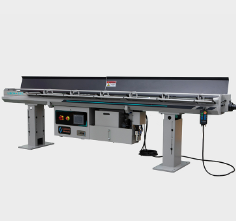Go beyond extraordinary in the field of automation

Release time: 2024-09-12 19:38:36
visit:
When the sensor of the feeder has sensed the material but the machine does not work, this may be due to a variety of reasons. Here are some possible causes and their solutions:
1. Possible causes
1. Power supply problem:
The power supply is disconnected or unstable.
The power cable is damaged or in poor contact.
2. Sensor fault:
Although the sensor senses the material, the signal transmission may be problematic.
The sensor is damaged or contaminated, resulting in abnormal signals.
3. Control circuit problem:
Components in the control circuit are damaged, such as relays, PLC (programmable logic controller), etc.
Error or incorrect execution of the control program.
4. Mechanical part failure:
The feeding mechanism (e.g. motor, belt, roller, etc.) is damaged or stuck.
Improper adjustment of mechanical parts, such as insufficient roller pressure, wrong feeding Angle, etc.
5. Signal interference:
Electromagnetic interference in the external environment may affect the signal transmission of the sensor.

6. Material problem:
The material itself may be defective or irregular, resulting in normal processing by the feeder.
Second, the solution
1. Check the power supply:
Verify that the power supply is connected and stable.
Check whether the power cable is damaged or in poor contact, and repair or replace it.
2. Check the sensor:
Check whether the cable connection to the sensor is normal and whether the sensor is contaminated or damaged.
Try to recalibrate or replace the sensor.
3. Check control circuit:
Check the components in the control circuit for damage, such as relays, PLCS, etc.
Check that the control program is executed correctly and reprogram or debug it if necessary.
4. Check the mechanical part:
Check whether the feeding mechanism is damaged or stuck, and repair or replace it.
Adjust the parameters of mechanical parts, such as roller pressure, feeding Angle, etc., to ensure smooth feeding.
5. Eliminate signal interference:
Check whether external electromagnetic interference sources exist and take appropriate shielding measures.
6. Check the materials:
Check whether the material meets the requirements, and replace it if it is defective or irregular.
Third, precautions
Before making any repairs or adjustments, always disconnect the power supply to ensure safety.
For non-professional personnel, do not disassemble or modify the internal structure of the device.
If the preceding methods fail to solve the problem, contact the device manufacturer or professional maintenance personnel for check and maintenance.
Previous article: Why does the automatic feeder stop feeding?
Next article: The feeder can not manually clamp the material. What happened